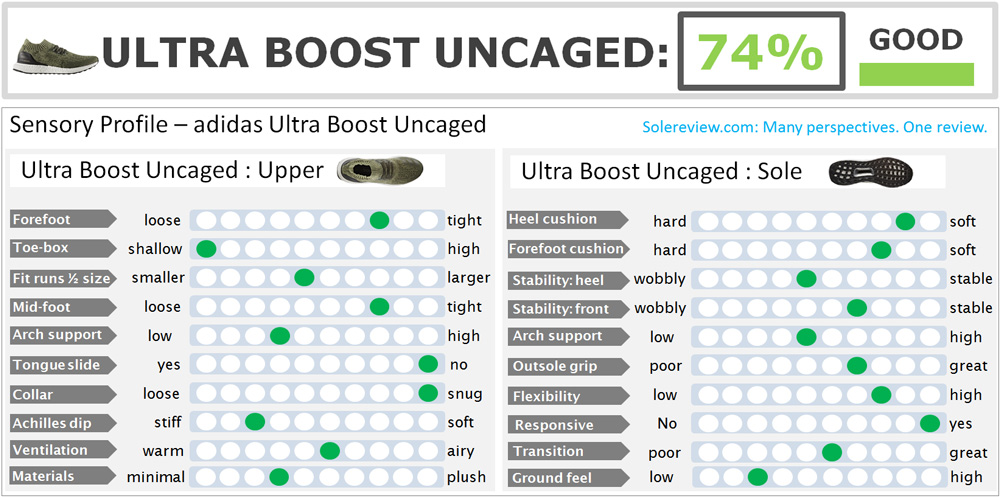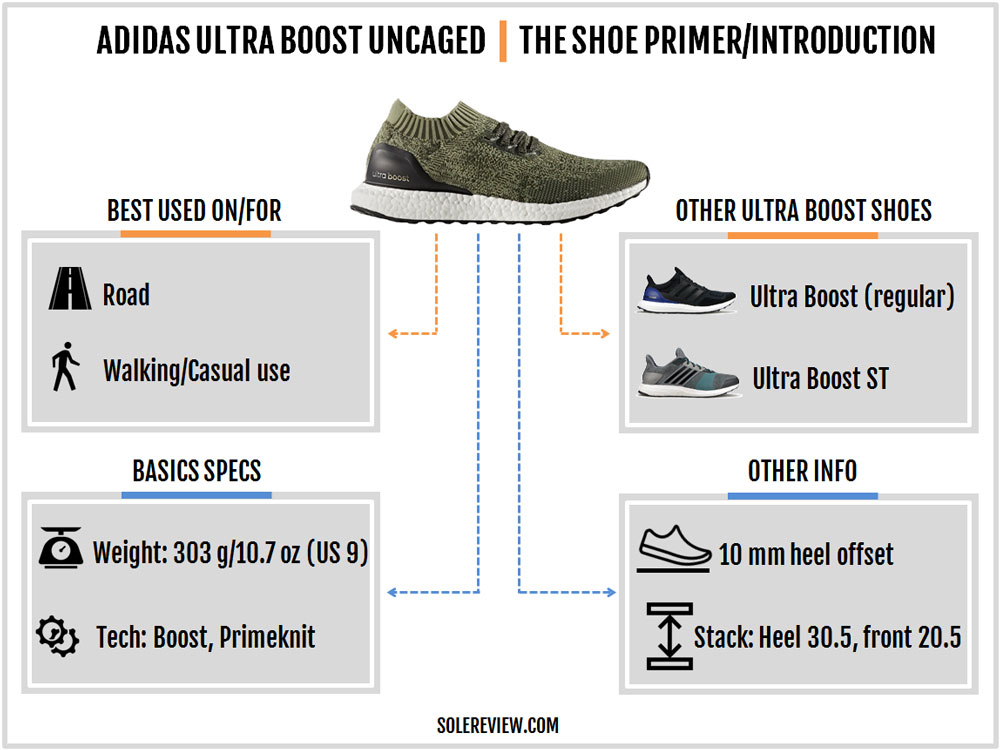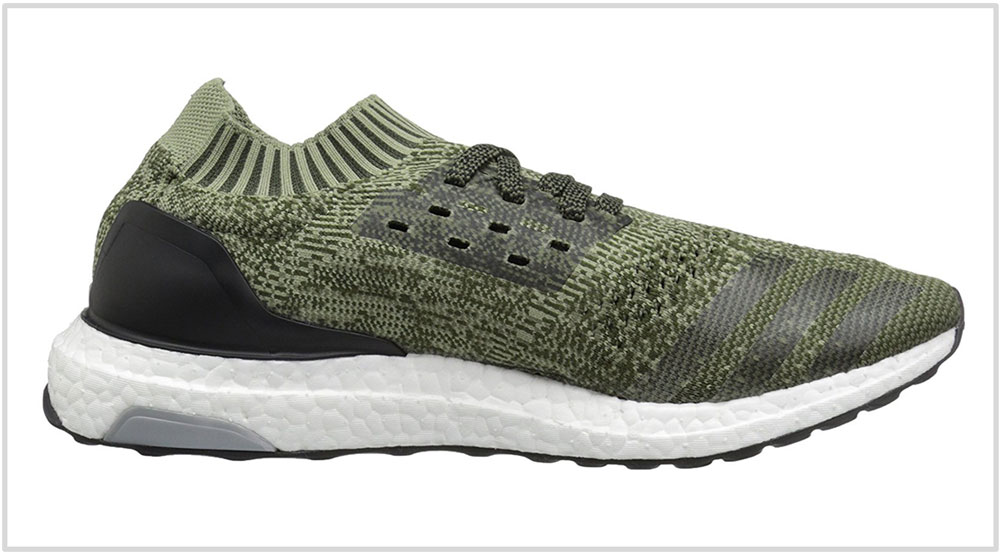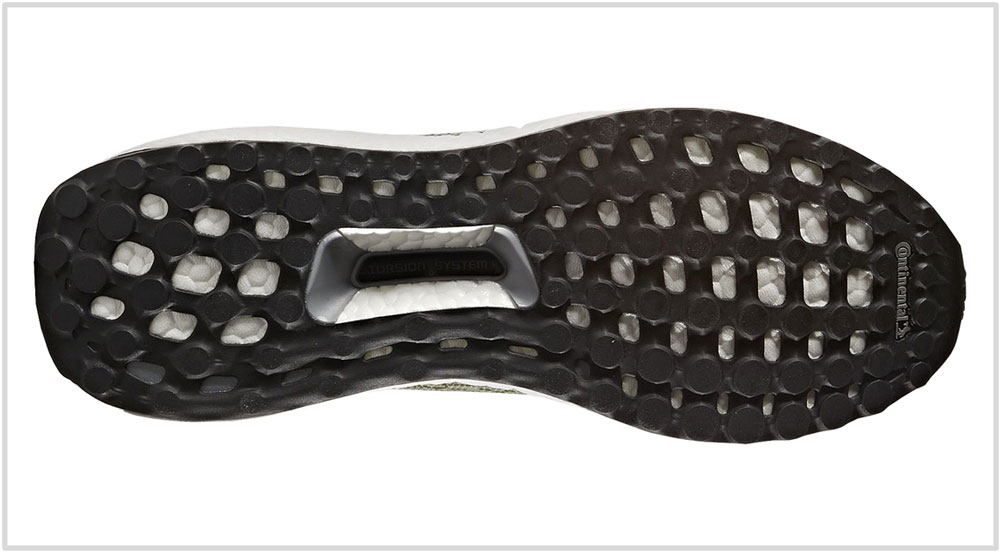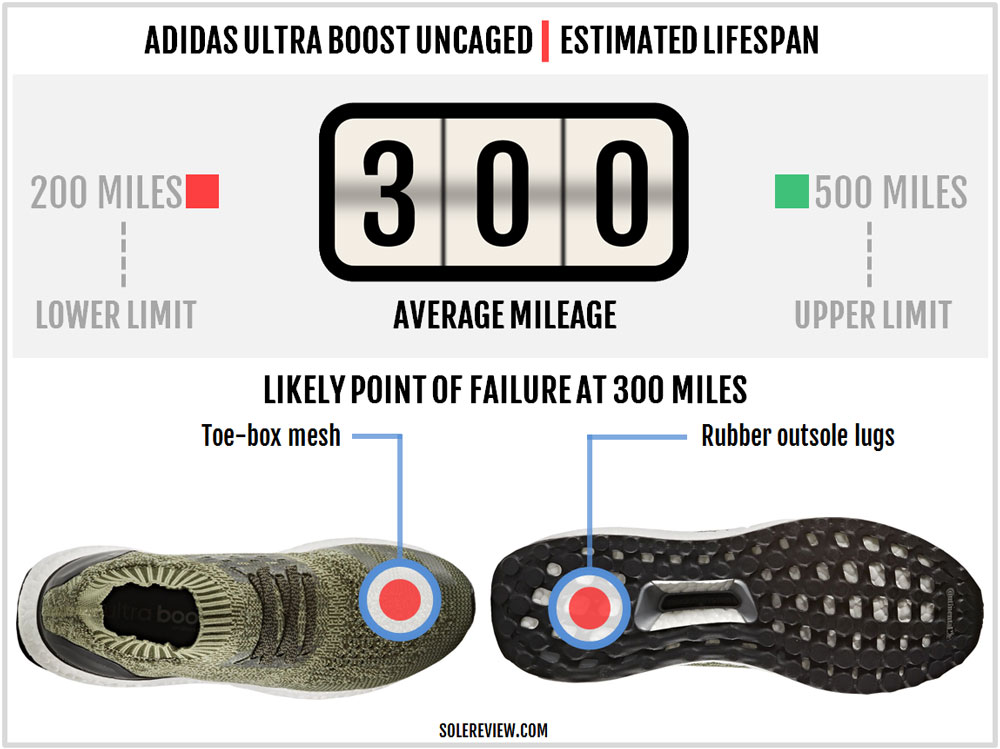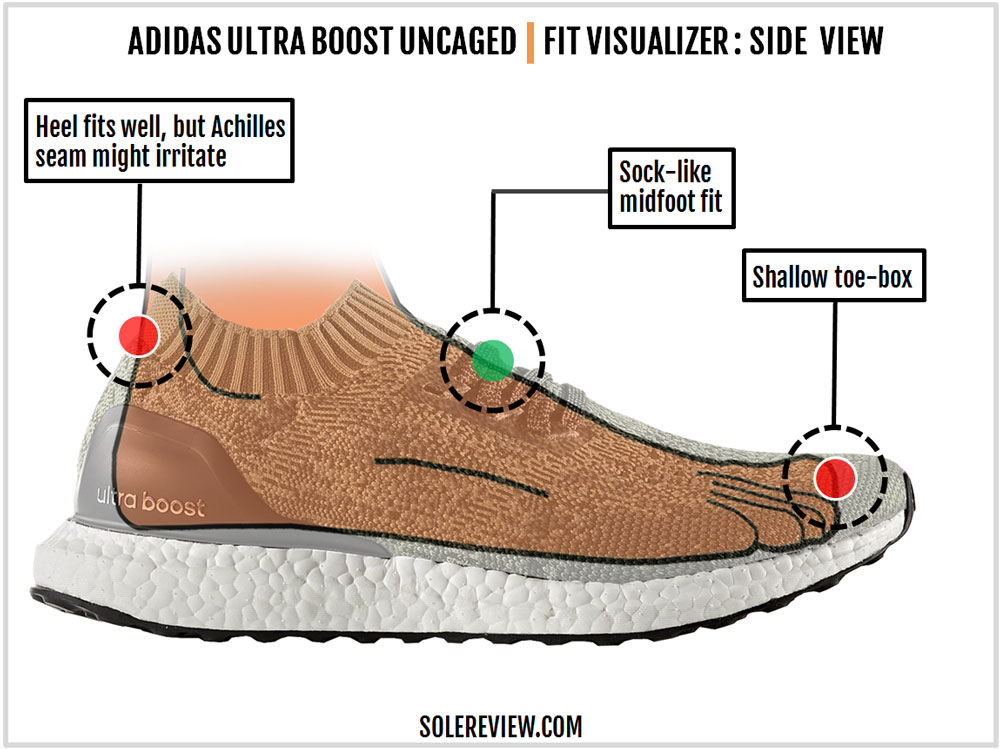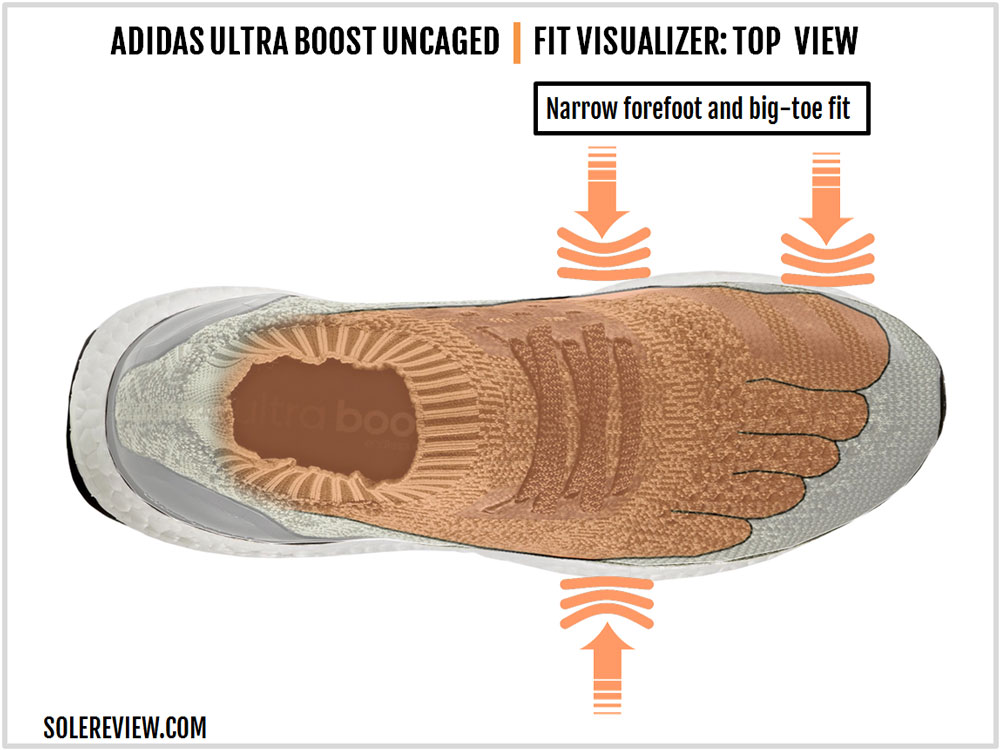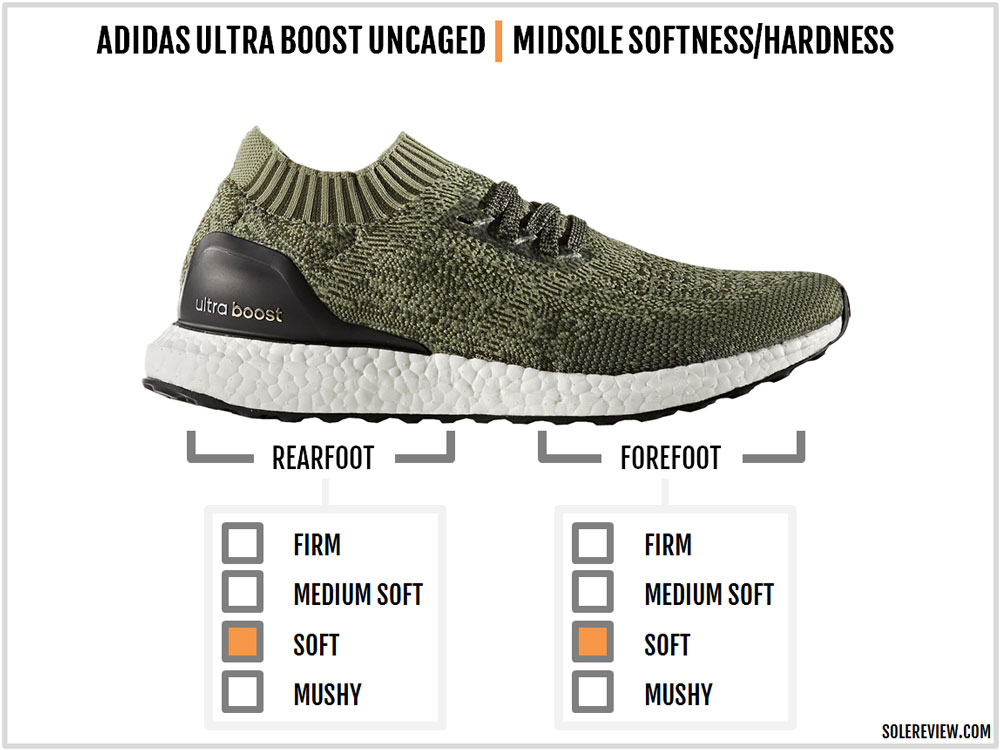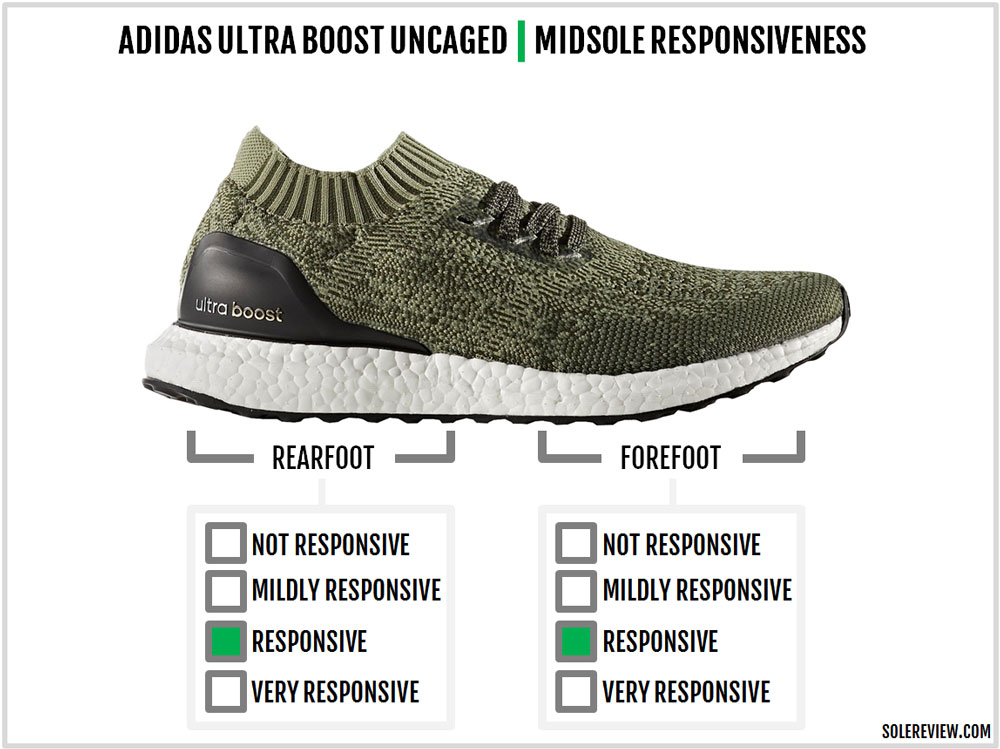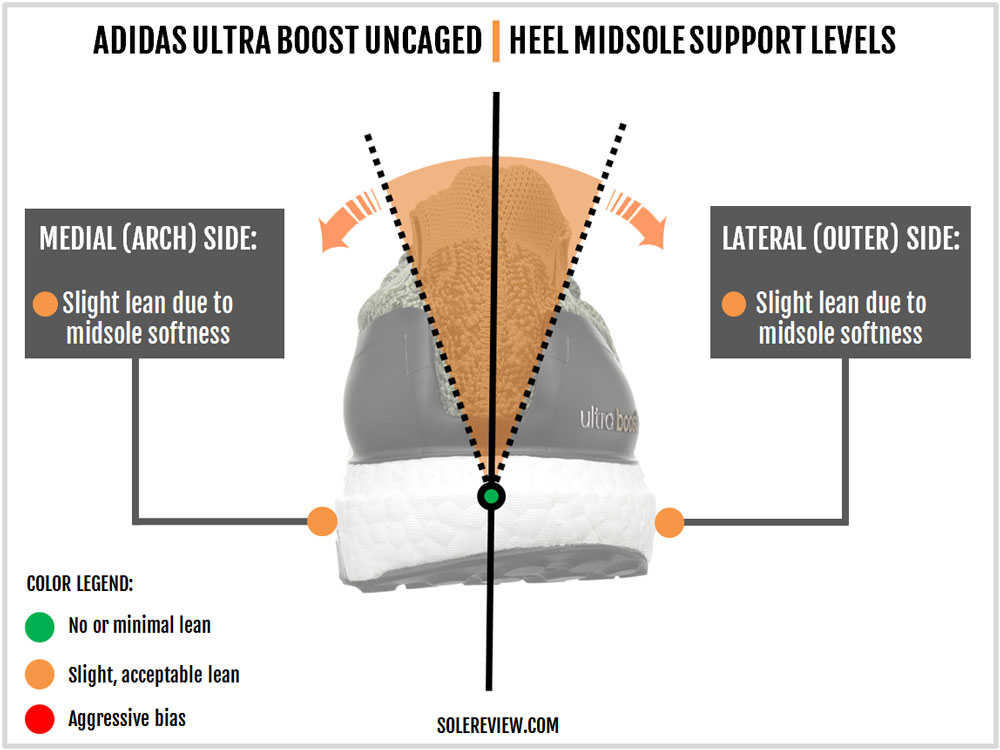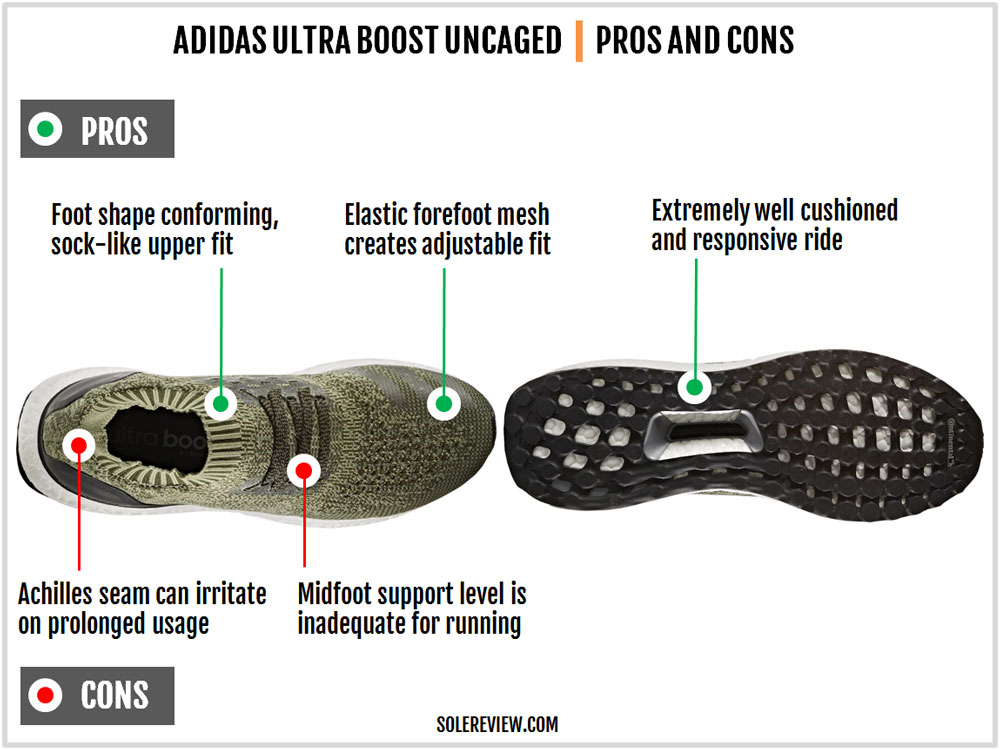INTRODUCTION
The adidas Ultra Boost Uncaged (we’ll call it UBC in short) has to be one of the world’s most comfortable lifestyle sneakers. That’s a predictable outcome of pairing a high volume Boost midsole with a Primeknit upper, minus the infamous plastic cage.
The Uncaged version is a derivative of the original Ultra Boost, and appears to be inspired by the DIY trend of removing the plastic cage. Consumers who bought the Ultra OG with the intent of using it as a casual shoe found the slip-on style more comfortable without the cage.
The plastic-free upper design makes the Uncaged extremely comfortable, but does it pass muster as a performance running shoe? Well, yes and no.
Compared to other lifestyle shoes such as the Alphabounce and the Pure Boost, the UB Uncaged performs better as a running shoe. After all, the midsole and the outsole is the same as the stock Ultra Boost. The upper performance isn’t bad either, except that you’ll encounter two issues if you decide to use the Uncaged Ultra as a hardcore running shoe.
Removing the plastic cage reduces the level of midfoot support. While the UB Uncaged’s midfoot has supportive underlays inside the shoe, it is not enough from a performance running viewpoint.
Considering that the Ultra does not have the firm EVA rim of tried-and-tested adidas models, the absence of the cage makes this Ultra Boost version unsupportive at higher speeds.
Solereview was no fan of the plastic cage. Our preferred approach is the synthetic midfoot panel used on the Ultra Boost ST or the Glide 8, which works better functionally and comfort-wise.
The second factor which makes the UBC unsuitable for longer or/and faster runs is the Achilles seam. Unlike the Ultra Boost or the ST, the heel collar is a tight band of stretchable knit. A flat-lock seam is the only joint on the Primeknit upper, and this runs vertically over the heel.
If you’re running sock-less or even with thin running socks, the seam is going to be a problem over longer distances. While the subtle flat-lock seam is nowhere as bad as the Nike Lunarepic Flyknit’s version (which had a thick band inside), it limits the UB Uncaged’s athletic potential.
The UB Uncaged will do well for mild running workouts – say a couple of miles – but not for speed-work or any high mileage stuff. Look at this shoe as an equivalent of a scooter to cruise around the neighborhood. But if you wanted to go the distance or speed up to interstate limits, then you need to buy a proper motorcycle.
When it comes to walking all day or situations which require a lot of standing, the UBC is your best bet. But what makes something good at one job does not necessarily make it good at another, and that is true for the UBC too.
DESIGN AND MATERIALS
The upper design has a familiar look. After all, the adidas Primeknit upper has already been seen in other variations of the Ultra Boost. However, the Uncaged upper does three things differently than the regular Ultra Boost or the ST.
Here, the entire outer upper is made of the Primeknit textile. The ST also had full-length Primeknit, except that there wasn’t much stretch. That’s one of the reasons why the ST felt so spacious. The regular Ultra uses elastic Primeknit, but the rearfoot is constructed using a regular mesh.
As the name implies, the outside of the midfoot is devoid of any panel, plastic or synthetic. Instead, there’s a transparent urethane laminate proving additional strength to the lacing area. Just so that you know, these fused laminates were also used on the ST along with the synthetic midfoot panel.
The adidas three-stripes logo is conspicuous by its absence. Usually, the midfoot area is where you see the logo. The UB Uncaged keeps the midfoot free of visual clutter and instead, applies the fused urethane in a three-stripe formation over the inner forefoot.
The adidas branding is extremely subtle. On some colors, (like the one in this review) one needs to squint hard to notice the logo.
The plastic heel counter is identical to what’s on the regular Ultra. It is a stiff piece of plastic which wraps either side of the heel, which also explains the lack of an internal stiffener.
The heel collar treatment is different from how the other UB variants have been designed. The entrance is made entirely of a stretchable knit tube with a ribbed design. This is new for the Ultra Boost but not new in the industry. Other knit upper shoes such as the Free 3.0 or the Lunarepic Flyknit have a similar design.
Looking at the UB Uncaged, one would assume that the entire upper is stretchable. But functionally speaking, only the forefoot, heel collar, and the lacing zone have elasticity.
Primeknit is actually a kind of an engineered mesh, a concept which uses different structures over a single mesh component. In this case, the toe-bumper is a densely knit, non-stretch section of PK. The forefoot, on the other hand, combines forefoot vents with an elastic property. Needless to say, the forefoot part is stretchy and conformable.
The midfoot PK has a tighter knit, and the rearfoot uses a semi-stretch Primeknit. But all of this is on the outside, and what really affects the elasticity of the UB Uncaged is what happens inside.
The midfoot might not have a plastic cage, but the insides are lined with supportive underlays. These synthetic panels are non-stretch, and offer structural support under the midfoot.
Even the heel interior has a lot of lining. There is a layer of fabric and foam fill between your foot and the outside upper, and this filters any pressure caused by the external plastic counter.
The outer appearance of the Ultra Boost uncaged might appear minimal and deconstructed, but as you can see, there’s a lot going on inside.
The sole composite is the same as the one used on the regular Ultra Boost. The midsole is packed with Polyurethane globules which give any Boost based shoe its signature ride quality.
The lasting over the midsole is a layer of soft perforated synthetic – the same material which is used on the original UB. The removable insole is a cushioned, compression molded kind.
There’s a plastic Torsion shank under the midfoot which is inset deep into the Boost midsole. The plastic shank extends to the medial heel, acting as a support structure.
At the very bottom, the UB Uncaged has a Continental branded outsole. Unlike the first UB design, the outsole features flat nubs made of a harder rubber. The stock Ultra Boost and UB ST also uses this outsole design.
Some weight shaving happens on the UBC, courtesy of the upper. The UB Uncaged is 5 grams or 0.2 ounces lighter than the regular caged version.
While the first Ultra Boost’s buttery-soft rubber had serious durability issues, the updated design fares much better. By switching to a flat-lugged outsole with a harder rubber compound, adidas has prolonged the lifespan of all Ultra Boost models.
The outsole durability of the recently introduced Continental isn’t as durable as the one used on the Glide Boost. Even so, the UBC should last a few hundred miles.
The Primeknit upper is thick and elastic in stress areas, so it is unlikely that you’ll see wear and tear before it’s due. However, if you’re wearing the UBC without socks (which we don’t recommend), then the big-toe area might experience frictional wear and tear.
UPPER FIT AND FEEL
Considering the stretch nature of the Primeknit upper, a shallow toe-box comes as no surprise. This is true for the caged UB and other stretch-knit models of other brands. Shallow doesn’t mean uncomfortable, though. The upper is shape conforming around the forefoot, and will work around your foot shape.
The forefoot is very snug. The elastic knit experience is an acquired taste, so if the UBC happens to be your first Primeknit shoe, then you’ll need a few days to get accustomed. The same applies to stretch heel collar too.
Unlike other UB variants, the heel entry is very small. It takes some effort to enter the shoe, but once you’re inside, the collar band snap-fits around the ankle. As mentioned previously, the seam can be a bother if you’re planning to wear the UBC barefoot or with no-show socks. To that end, a pair of socks will make a huge difference. So do that.
The other reason to wear socks is that the UBC suffers from the same problem which the Nike Lunarepic Flyknit did. Without socks, the foot tends to stick to the insole. So when you’re pulling your foot out, the insole also moves from its position. With socks, taking off the UBC is easier.
One might think the laces to be gratuitous, included mainly for decoration. Well, wearing the UBC without laces does not matter for casual use, but if you plan to do any running at all, then keep the laces on.
The laces do provide some structure and fit adjustment. The inner side of the midfoot has these synthetic panels, with only the lacing area being unlined Primeknit. The laces complement the internal layering to result in a better foot wrap. The midfoot is free of pressure points due to the wide laces, and also because of the lack of thick synthetic panel or plastic.
Your preferred UBC sizing will depend entirely on your experience (and hence tolerance) with knit uppers. If you’ve never worn a shoe like the Ultra Boost or Nike Flyknit before, then you’ll discover the forefoot to be very narrow.
But as with all things, one gets used over time. Our recommendation is that you stick true-to-size for the UBC unless the fit feels uncomfortable. That aside, it is important to call out the difference in sizing between the regular and uncaged Ultra Boost.
The Uncaged fit is slightly larger than the caged UB. That’s because the relatively minimal heel design allows the foot to sit rearwards compared to the caged UB’s structured heel. When the foot sits backward, it creates extra room in the front of the toes.
RIDE QUALITY AND BEHAVIOR
The UBC’s midsole is pure Boost foam. There’s no firm EVA rim above it, which means that the foot has closer access to the cushioned material. The insole is also soft, and the latticed lasting also yields easily. Even the outsole plays its part in producing softness.
Multiple windows are cut out over the outsole surface, exposing the Boost foam below and making the outsole very flexible. This makes the ride even softer. The thick rearfoot is ultra-plush and cushioned, and the slimmer forefoot is soft too.
The unadulterated Boost foam has an abundance of responsiveness. The Polyurethane based material has an inbuilt rebound quality, and you’ll feel that with every step you take.
It sounds counter-intuitive, but the forefoot feels more reactive than the heel does. The rearfoot has a lot of Boost, so the experience there is more of softness than pure rebound. The thinner forefoot tends to compress under weight, and hence delivers a heightened sense of spring-back.
The midfoot might have a torsion shank, but its efficacy is reduced without a midfoot panel. As a result, the upper midfoot doesn’t feel securely locked down as a proper running shoe should.
There’s a slight lean on either side because of the very soft midsole. The high heel stack and the 100% Boost midsole doesn’t feel as rock solid as EVA infused Boost models.
The transitions will be sluggish if you intend to do any running in the Ultra Boost Uncaged. The absence of any firm layer leads to slow weight transfers.
PROS AND CONS
We’ll round up some of the UBC’s flaws. One, the Achilles heel seam is an area you need to watch out for. This will not be an issue on moderate use, but might manifest itself when the UBC is worn for extended periods of time. As a preventive measure, get a pair of socks (ankle or higher) to go with the shoe.
adidas should look at some previous industry best practices to manage the seam; like moving the flat-lock seam to the side for example.
The UBC isn’t as supportive as core performance running shoes. The lack of an external midfoot structure and reduced lacing robs the UBC of upper support. Without adequate midfoot support, the UBC falls short of performance running standards.
If you plan on using the adidas Ultra Boost Uncaged purely as a casual sneaker, then there’s plenty of good things to say about it. The Primeknit upper fits great with all the comfort of a sock, and the high volume Boost midsole provides a superlative cushioning experience.

